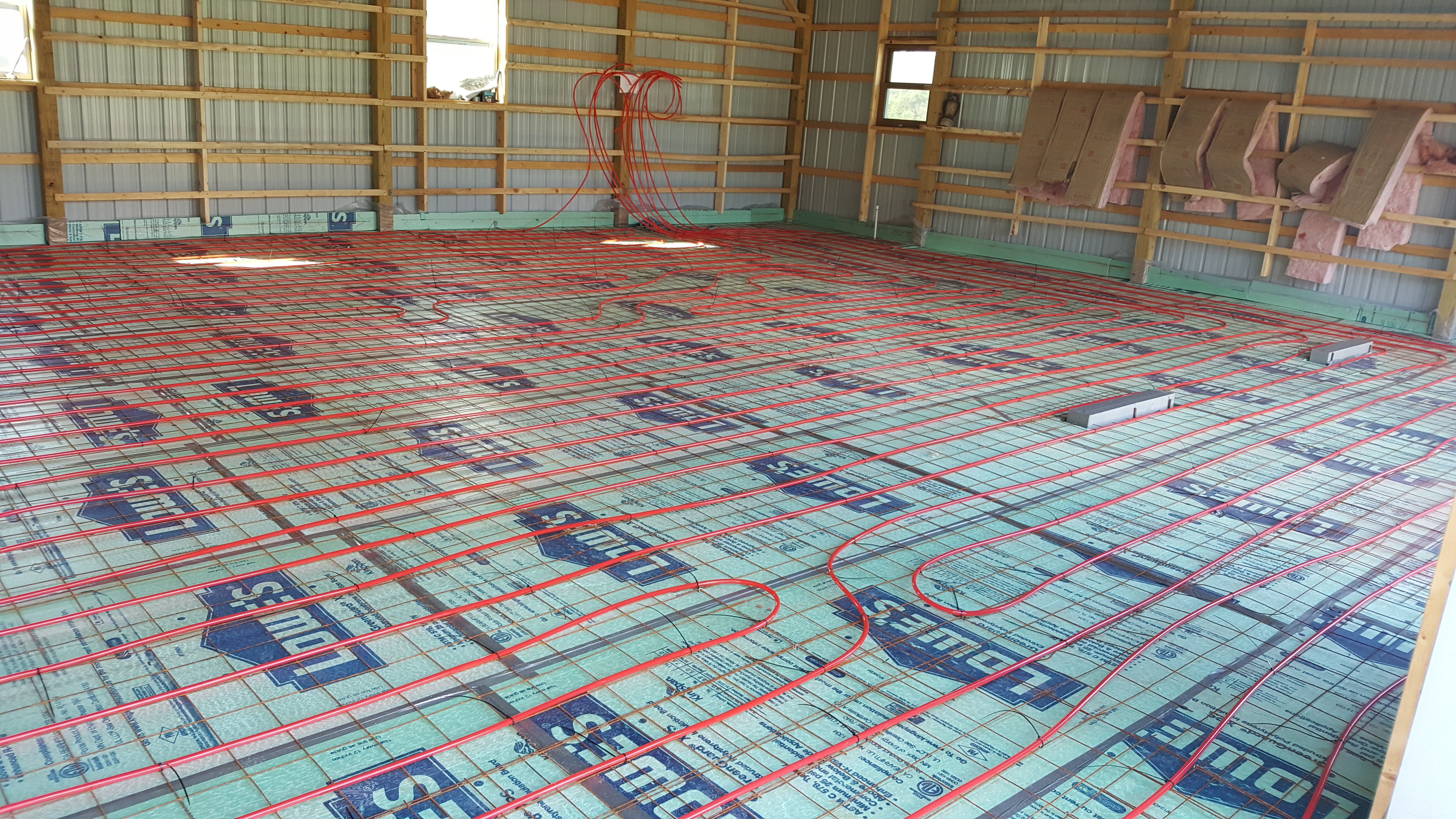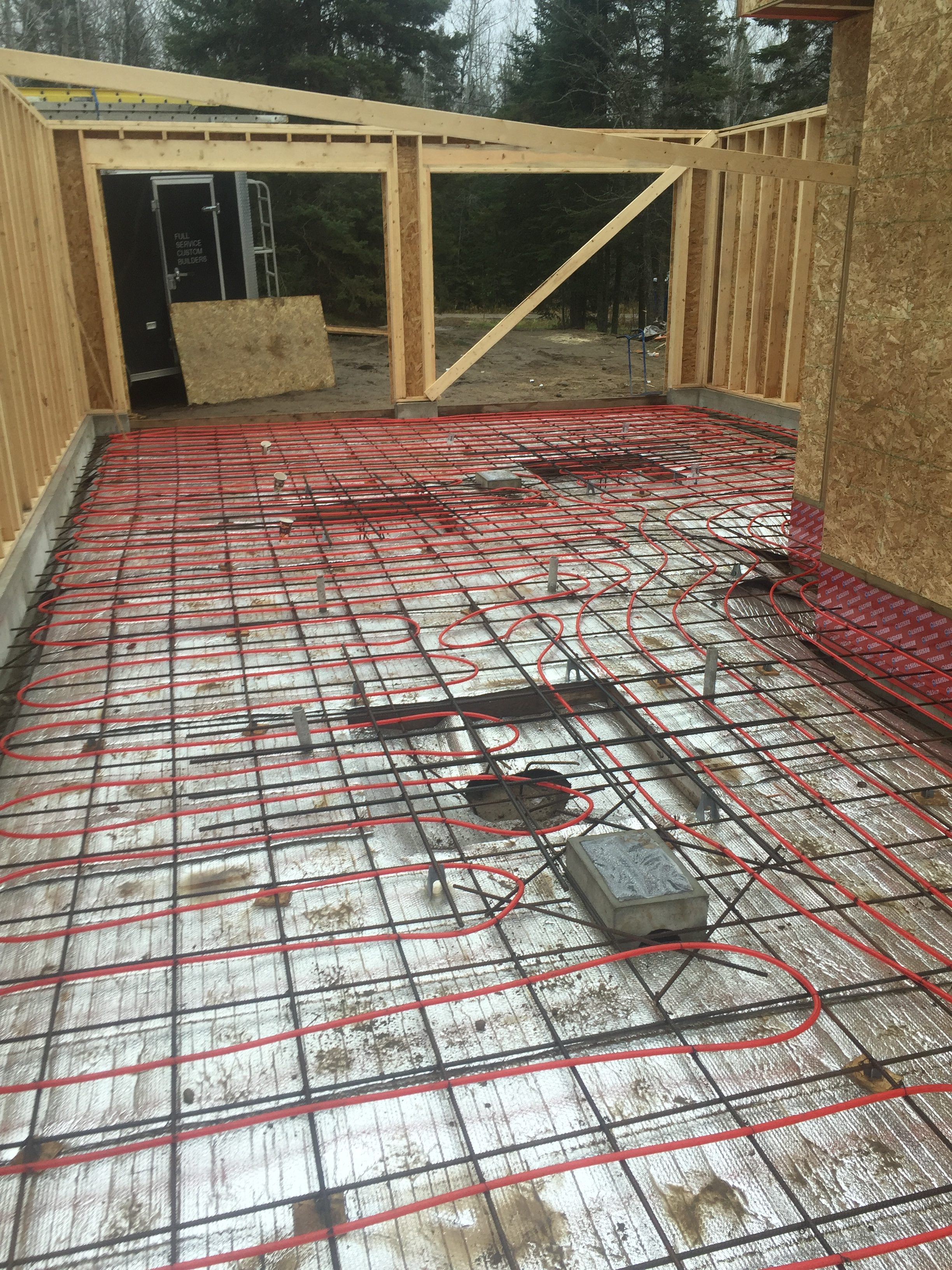

The manufacturer of your materials will have specific instructions. Heat trapped under cabinetry and other obstacles can be problematic, so avoiding those areas by at least 4” is recommended. For example, if you plan to have a vanity-style storage cabinet or workbench on your new heated floor, avoid running tubing to that area. Hydronic systems are not typically available in ready-to-use kit form, so a thorough understanding of the system and installation procedure is very important. This will be the square footage number you will need to purchase your materials. Measure the entire garage floor space the system will be installed in. Electrical tools, such as a wire stripper and crimper, screwdriver, and multimeter.Concrete tools, such as a mixing paddle, drill, and trowel.We will assume that the new pad is ready to be poured. Because a hydronic system uses both electricity and water, both plumbing and electrical work will be required. HydronicĪn underfloor hydronic heating system will have more components than a comparable electric system. Because concrete pads can get quite large, hydronic systems are used almost exclusively to heat a garage floor. This is because electric systems typically get more expensive as they become larger, where the opposite is true for hydronic systems. Radiant floor heating in a garage can be neutralized by drafts and poor insulation, so you may incur the expense of correcting those issues as well.Īs a rule, garage floors with underfloor heating will use a hydronic system versus an electric system.

New concrete will be required in most cases, which adds to the total cost of the project.Hydronic systems cost less to operate on average, but the installation expense can be quite high. Radiant floor heating in a garage can be expensive to operate, especially electric versions.The cost of radiant floor heating has come down from years past, so installing radiant heat in a large space like a garage has become much more cost-effective.Most types of flooring will protect the system from accidental damage, but none will do a better job than concrete. A radiant heat system under a concrete pad is not only very efficient but also very durable.Radiant floor heating is excellent for heating one space at a time, like a garage.Pros and Cons of Radiant Floor Heating in a Garage In terms of fire hazards, radiant floor heating is no more dangerous to use than any other electrical appliance. Since the heat source is isolated under concrete, it can never become hot enough to become dangerous. Radiant floor heating is safe to use, even in areas that may contain flammables. More often than not, we just need to keep the ambient temperature above freezing to protect items like photographs and paint.Ĭoncrete tends to hold temperature better than wood, so underfloor heating is a great choice for a garage. The good news is we don’t typically need our garage to be as comfortable as indoors. However, since garages aren’t typically part of the HVAC system, a radiant floor heating system will work harder than the same system inside the home, so you should set reasonable expectations. For example, a hydronic system located in a two-car garage with 9’ ceilings can raise the ambient temperature by about five degrees in an hour or two.

This depends on a number of factors, like insulation and airtightness. How Long Does Radiant Heating Take to Heat a Garage Floor? Radiant floor heating can be installed under virtually any floor covering, but today we will focus on installing a system under a new garage concrete pad. Colder climates will obviously require more heating for longer periods, but the heat radiating from the floor will heat the surrounding air as well. The heat efficiency will depend largely not only on the aforementioned factors like insulation and airtightness but the size of the heating system also. Generally speaking, heated garage floors heat the whole garage. This warms the pad evenly, and since heat rises, it can also warm the rest of the garage. Hydronic radiant heating employs special tubing, known as PEX, to circulate warm water throughout the pad. This heat radiates upward, warming the concrete and surrounding area. Radiant floor heating comes in a few forms, but the most popular by far are the electric and hydronic radiant floor heating systems.Įlectric radiant floor heating works by installing heated wires under a floor, or in this case, concrete. How Does Garage Radiant Floor Heating Work Today, we will discuss one popular garage feature that offers comfortability, usability, and a good return on investment: radiant floor heating. Working in a garage in winter can be very uncomfortable, especially in cold climates. For the do-it-yourselfer, the garage may be the most used room in the house. Garages are an underappreciated and overused feature of our homes that many of us take for granted.


 0 kommentar(er)
0 kommentar(er)
